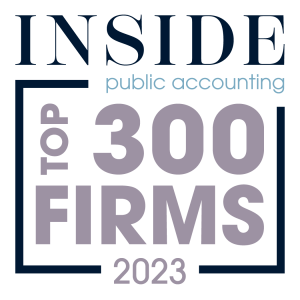In December 2022, President Biden signed the Setting Every Community Up for Retirement Enhancement (SECURE) 2.0 Act. Among other things, the sweeping new law made some significant changes to so-called catch-up contributions, with implications for both employers and employees.
With the new catch-up provisions scheduled to kick in after 2023, many retirement plan sponsors have been struggling to institute the necessary processes and procedures to comply. In recognition of taxpayer concerns, the IRS recently provided some relief in Notice 2023-62. In addition to extending the deadline, the new guidance corrects a technical error in SECURE 2.0 that had left taxpayers and their advisors confused about the continued availability of catch-up contributions for employees.
The new requirements
Tax law allows taxpayers age 50 or older to make catch-up contributions to their 401(k) plans and similar retirement accounts. The permissible amount is adjusted annually for inflation. For 2023, you can contribute an additional $7,500 over the current $22,500 annual 401(k) contribution limit. The contributions are allowed regardless of a taxpayer’s income level.
Under the existing rules, all eligible taxpayers can choose whether to make their contributions on a pre-tax basis or a Roth after-tax basis (assuming the employer allows the Roth option). Section 603 of SECURE 2.0, however, mandates that any catch-up contributions made by higher-income participants in 401(k), 403(b) or 457(b) retirement plans must be designated as after-tax Roth contributions.
Higher-income participants are those whose prior-year Social Security wages exceeded $145,000 (the threshold will be adjusted for inflation going forward). In addition, a plan that allows higher-income participants to make such catch-up contributions also must allow other participants age 50 or older to make their catch-up contributions on an after-tax Roth basis. The law provides that these requirements are effective for tax years beginning after December 31, 2023.
The imminent effective date had plan sponsors and payroll providers worried, due to multiple administrative hurdles. For example, sponsors must develop processes to identify higher-income plan participants — they generally haven’t had the need to calculate employees’ Social Security wages previously — and provide that information to their plan administrators. Sponsors also must institute procedures to restrict catch-up contributions to Roth contributions and communicate the changes to their employees.
The challenges are even greater for employers that don’t already have Roth contribution features in their traditional retirement plans. They have to choose between amending their plans to allow such contributions, which can take months to process and implement, or eliminating the ability to make catch-up contributions for all employees.
The IRS guidance
In Notice 2023-62, the IRS acknowledges the concerns related to the original effective date for the new requirements. In response, it has created an “administrative transition period,” extending the effective date to January 1, 2026. In other words, employers can allow catch-up contributions that aren’t designated as Roth contributions after December 31, 2023, and until January 1, 2026, without violating SECURE 2.0. And plans without Roth features may allow catch-up contributions during this period.
The guidance also addresses a drafting error in SECURE 2.0 that led to some questions about whether the law eliminated the ability of taxpayers to make catch-up contributions after 2023. The IRS made clear that plan participants age 50 or older can continue to make catch-up contributions in 2024 and beyond.
After-tax vs. pre-tax
Unlike pre-tax contributions, after-tax contributions don’t reduce your current-year taxable income, but they grow tax-free. This is a significant advantage if you expect to be subject to a higher income tax rate in retirement than you are at the time of your contributions.
You generally can withdraw “qualified distributions” without paying tax as long as you’ve held the account for at least five years. Qualified distributions are those made:
- On account of disability,
- On or after death, or
- After you reach age 59½.
You may be able to reap other savings from after-tax contributions, as well. For example, lower taxable income in retirement can reduce the amount you must pay for Medicare premiums and the tax rate on your Social Security benefits.
But you could have reasons to reduce your current taxable income with pre-tax contributions. For example, doing so could increase the amount of your Child Tax Credit, which phases out at certain income thresholds, as well as the amount of financial aid your children can obtain for higher education.
Note: Roth 401(k) contributions are currently subject to annual required minimum distributions (RMDs), like traditional 401(k)s. Beginning in 2024, though, designated Roth 401(k) contributions won’t be subject to RMDs until the death of the owner.
Potential future guidance
The IRS also used Notice 2023-62 to preview some additional guidance regarding Section 603 that’s “under consideration.” After taking into account any comments received, the IRS stated it is considering releasing future guidance concerning multi-employer plans and other out-of-the-ordinary situations.
Don’t delay
The IRS’s extension of the effective date for the Section 603 requirements is good news for employers and employees alike. As noted, though, the requisite changes to achieve compliance will take some time and effort to put into place. Plan sponsors would be wise to start sooner rather than later.
Categories: Emerging Regulations, Tax, Retirement Planning




